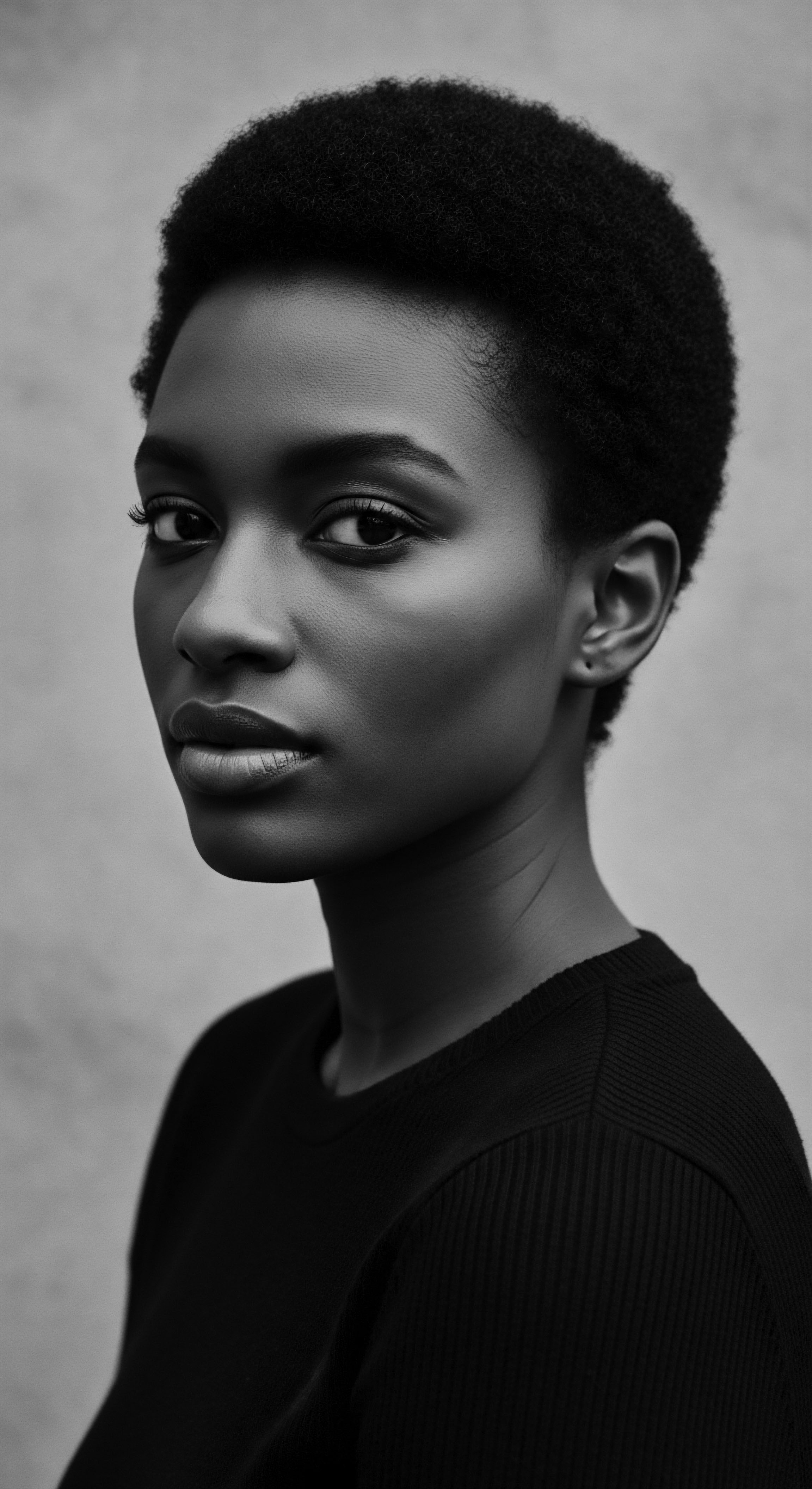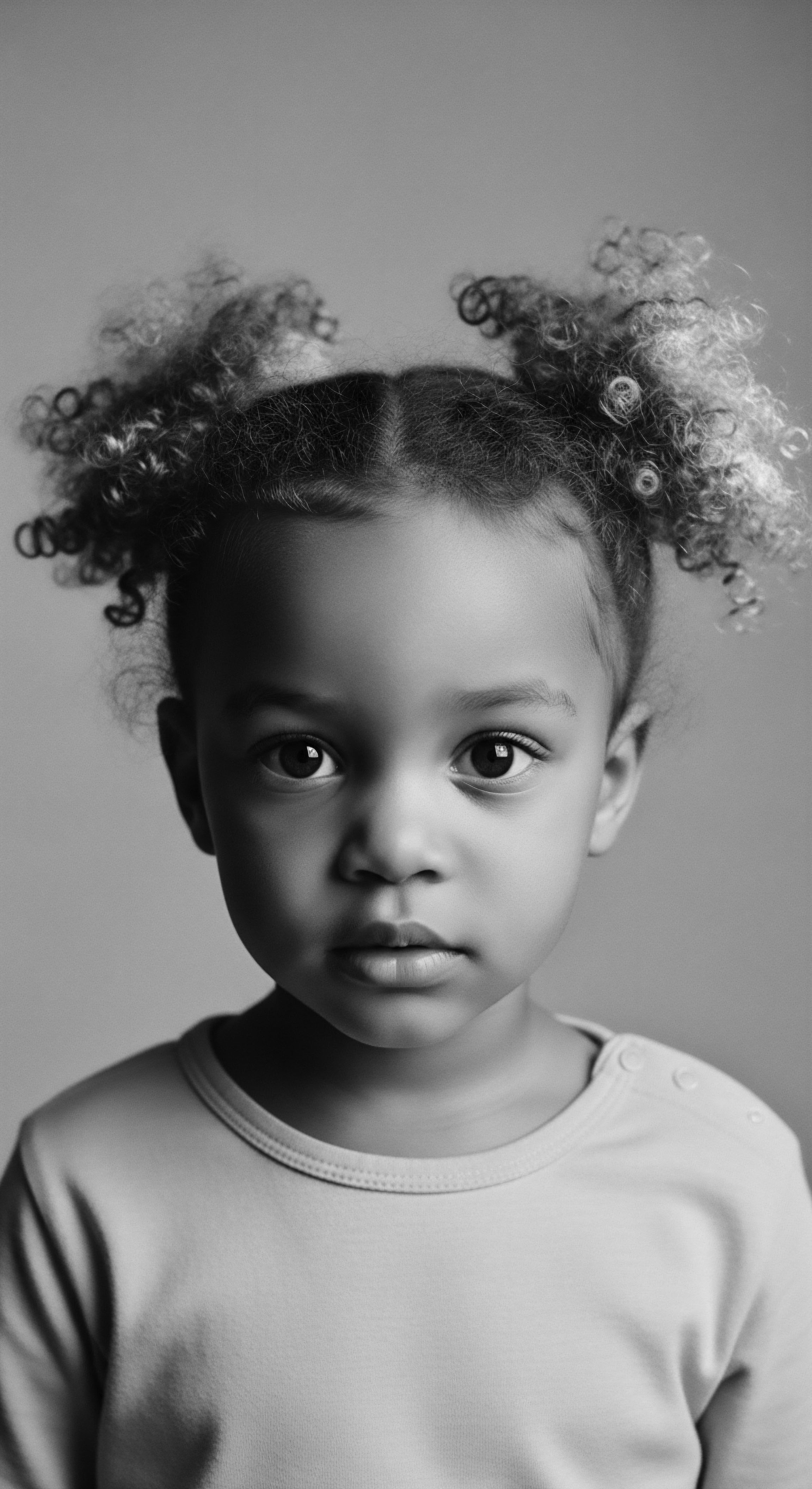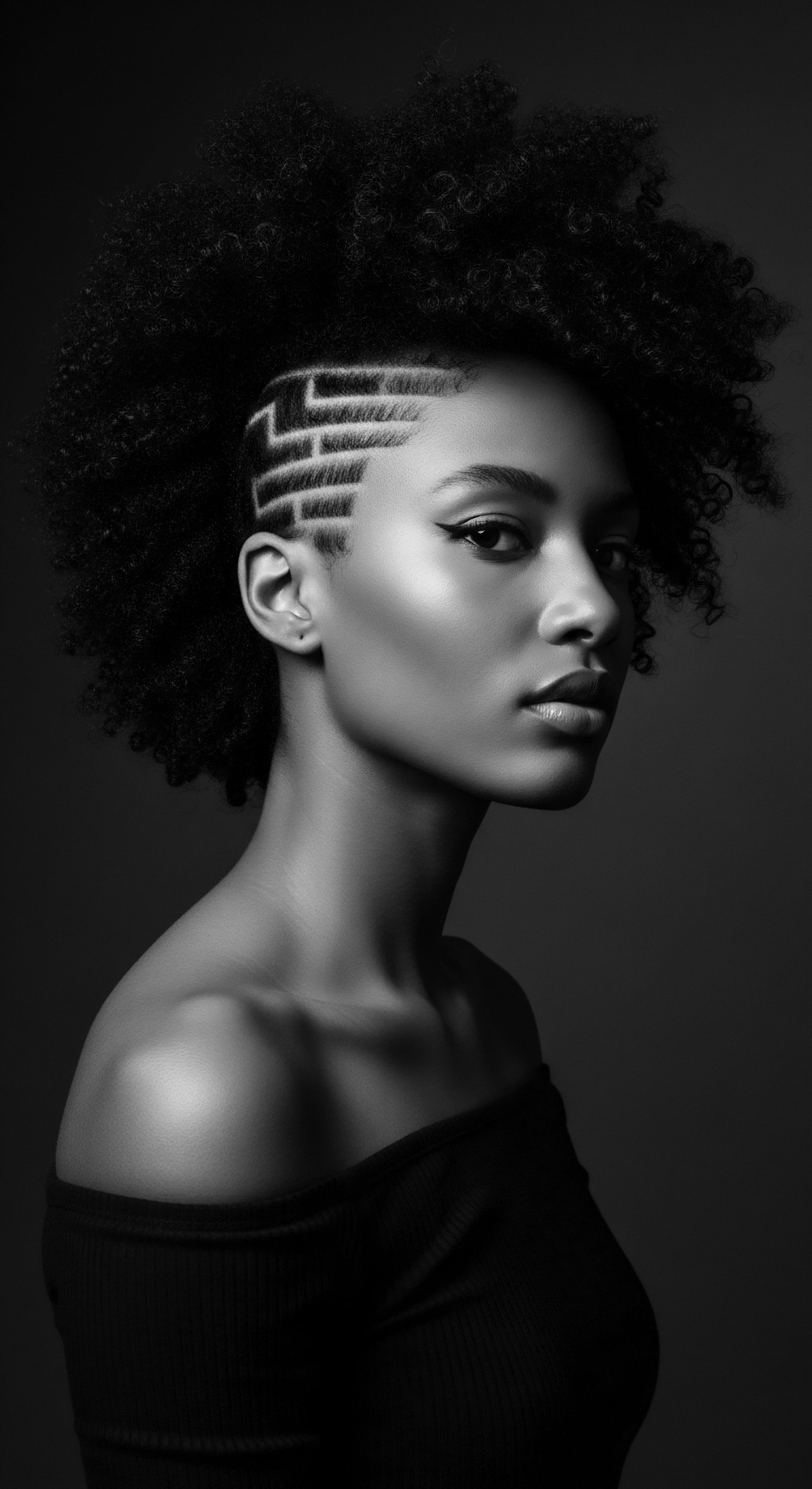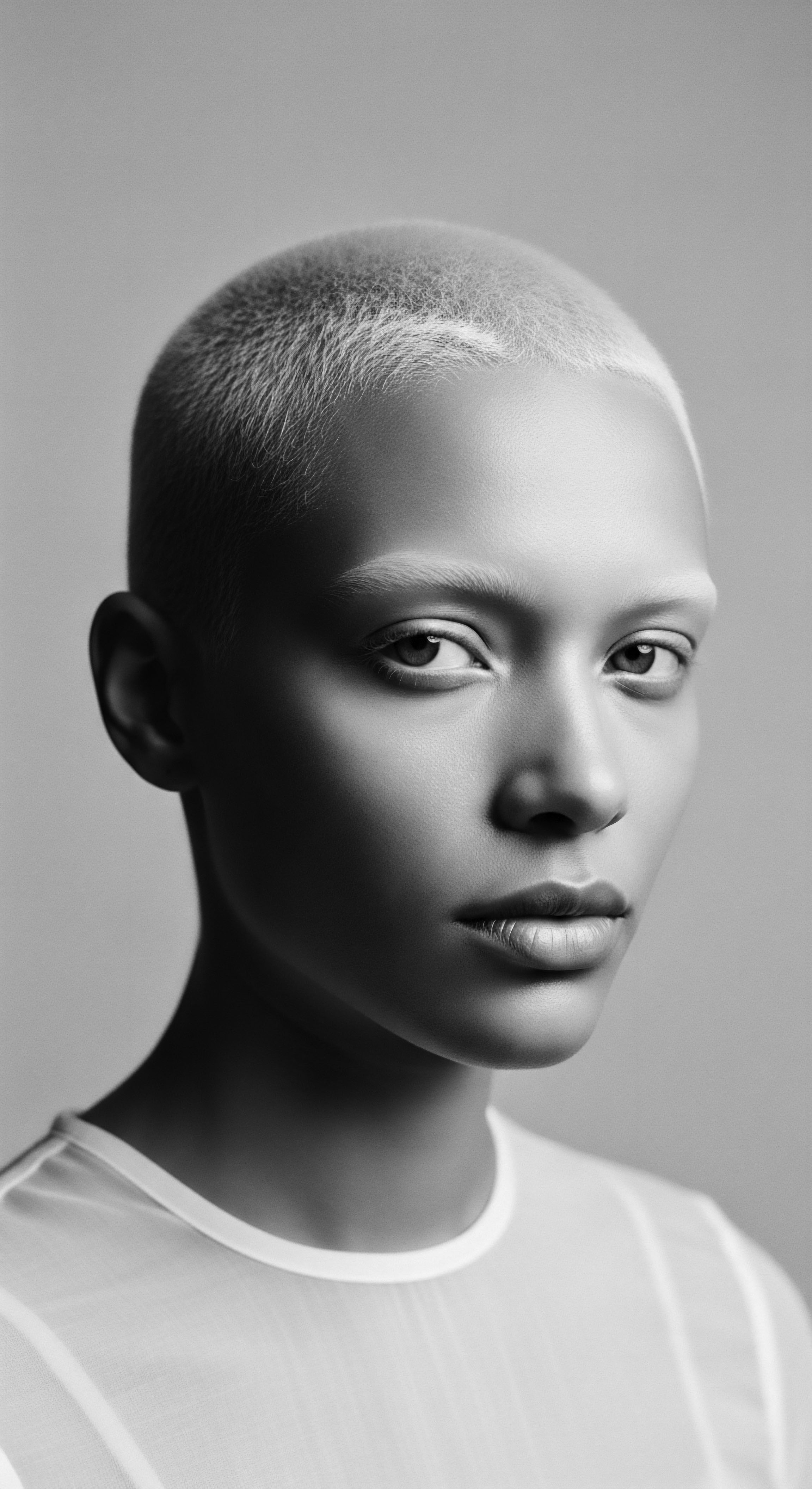
Roots
The coil, the kink, the curl – a language spoken not just by strands, but by generations. It is a story whispered across continents, woven into the very fabric of identity. For those of us with textured hair, particularly those of African and mixed-race ancestry, our hair is more than a simple adornment.
It is a living, breathing archive of history, a profound connection to ancestral practices, and a powerful statement in the contemporary world. This journey, from elemental biology to profound self-acceptance, is steeped in heritage.
To truly grasp the enduring influence of this cultural legacy, we must first look to the source, to the very structure and language of textured hair as understood through ages. Ancient African societies held a deep reverence for hair, recognizing it as a conduit for spiritual connection, a marker of social standing, and a testament to collective memory. These understandings were not merely abstract; they informed daily practices and communal bonds, creating a holistic approach to hair that modern science now increasingly validates.

The Architecture of the Coil
Consider the unique architecture of Afro-textured hair. Unlike straight hair, which typically possesses a round cross-section, our strands emerge from follicles that are often elliptical or flattened. This distinctive shape gives rise to the characteristic bends, twists, and spirals – the curls, coils, and kinks that grant textured hair its remarkable volume and strength.
The flatter the cross-section, the more elliptical the follicle, and the more tightly coiled the hair tends to be. This biological blueprint, passed down through genetic lineage, is a direct echo from the source.
Within the hair shaft itself, the distribution of keratin, the primary protein component, plays a role. In highly coiled hair, keratin can be distributed unevenly, leading to points of vulnerability at the bends of the hair shaft. This inherent characteristic means textured hair often requires particular care to maintain its moisture and prevent breakage.
Understanding this foundational biology helps explain why ancestral practices, focused on lubrication and gentle handling, became so vital. They were, in essence, a scientific response to a biological reality, long before modern laboratories isolated amino acids.

Early Classification Systems and Social Weaving
Long before contemporary numerical grading systems for hair types, African societies possessed their own intricate classifications. These systems were not based on curl pattern alone, but rather on a rich tapestry of social, spiritual, and communal meanings. Hair was a visual lexicon, communicating affiliations, life stages, and roles within the group.
The specific style, the ornaments added, and the communal act of grooming all contributed to a profound visual narrative. For example, among the Himba people in Namibia, specific red-pigmented strands have long protected against the sun, signifying connection to the earth and their traditions.
Ancestral hair practices across Africa were deeply intertwined with identity, communicating social standing, age, and spiritual beliefs through elaborate styles.
The Himba women, for instance, apply a mixture of Ochre, Butterfat, and Aromatic Resins to their hair and skin, forming distinctive dreadlocks called ‘otjize.’ This practice is not simply cosmetic; it is a cultural cornerstone, linking them to their land, their ancestors, and their community. Such traditional understandings far surpass a mere anatomical categorization; they view hair as a living extension of self and collective heritage.

Hair as a Social Language
The way hair was worn could denote an individual’s marital status, age, or even their readiness for certain rituals. In some communities, the styles could be so intricate they would take days to complete, often involving extensions crafted from natural fibers. This time-consuming artistry was not a burden; it was an occasion for bonding, for sharing stories, and for passing down ancestral knowledge from elders to younger generations. The tradition of braiding, for instance, traceable to 3500 BCE in parts of Africa, served as a means to identify tribe, wealth, and religion.
Hair, in these contexts, was a living document, constantly updated and refined. Its condition spoke volumes; well-kept, adorned hair reflected health, prosperity, and spiritual alignment. A lack of care, conversely, might signal mourning, illness, or societal exclusion. The lexicon of textured hair, therefore, extended beyond descriptive terms to encompass a broader cultural significance that influenced personal identity and acceptance within the community.
| Aspect of Hair Function |
| Ancestral Heritage View A spiritual antenna, social marker, identity map, historical record. |
| Modern Scientific View Protection from elements, aesthetic expression, biological appendage. |
| Aspect of Hair Typology |
| Ancestral Heritage View Tribe, age, marital status, spiritual role, family lineage. |
| Modern Scientific View Curl pattern (Type 3A-4C), porosity, density, width. |
| Aspect of Hair Care Principles |
| Ancestral Heritage View Holistic well-being, community rituals, natural ingredients, ancestral wisdom. |
| Modern Scientific View Biochemical composition, product chemistry, structured regimens. |
| Aspect of Hair Significance |
| Ancestral Heritage View Deeply personal and communal expression of heritage. |
| Modern Scientific View Personal grooming choice, individual aesthetic preference. |
| Aspect of Hair The enduring legacy of African hair reveals a profound understanding that transcends mere physical attributes. |

Ritual
From the grounding principles of its very structure, African hair flows into a continuum of living tradition – the ritual. These rituals, passed from hand to loving hand, translate biological realities into practices of care, adornment, and communal exchange. The heritage of textured hair finds its vivid expression in the deliberate acts of styling, the tools employed, and the transformative power these practices hold for identity and self-perception.
The concept of “ritual” extends beyond the purely ceremonial; it encompasses the rhythmic, often daily, acts of tending to one’s hair. These are acts imbued with meaning, shaping not just outward appearance but also an inner sense of self and belonging. The choices individuals make about their hair today are often a direct echo of these long-standing practices, even if the conscious connection to their ancient origins is sometimes distant.

Protective Styling Beyond Aesthetics
The artistry of Protective Styling in African hair traditions is a profound cultural marker, predating modern beauty salons by millennia. Styles like braids, twists, and locs were not simply decorative; they served practical purposes of hair preservation, minimizing manipulation, and safeguarding strands from environmental aggressors. Beyond practicality, these styles carried immense social weight. A woman’s braided style could convey her social status, whether she was married, or even if she was in mourning.
For instance, ancient Egyptian depictions from 3500 BCE show intricate braids, demonstrating the practice’s deep roots. Cornrows, called ‘Kolese braids’ among the Yoruba, trace their lineage back to 3000 BCE, their patterns often signifying tribal identity and status. During the transatlantic slave trade, braids took on an covert function, reportedly used to map escape routes and hide seeds for cultivation upon liberation, a stark illustration of resilience in the face of oppression. The enduring presence of these styles today, from box braids to Fulani braids, stands as a testament to this deep lineage, a reclaiming of ancestral artistry and ingenuity.

Tools and Their Ancestral Handprint
The tools used in textured hair care have also evolved, yet their fundamental purpose remains deeply rooted in heritage. Traditional African combs, often carved from wood or bone, were not just detangling instruments. They were objects of cultural significance, sometimes adorned with symbols that indicated tribal identity, personal history, or social class. These combs were designed with wider teeth and rounded tips, inherently suited for the unique coiling patterns of African hair, a testament to ancient understanding of hair health.
The passage of hair care knowledge through generations, often in communal settings, underscores the cultural significance of these practices. Women would gather to braid and style each other’s hair, transforming a utilitarian task into a social event. These gatherings were spaces for storytelling, for sharing wisdom, and for reinforcing communal bonds. This collective act of care speaks to a sense of shared heritage, where hair becomes a medium for connection and continuity.
The communal act of hair styling, a timeless tradition, reinforces social bonds and transmits ancestral wisdom through generations.
Modern tools, while technologically advanced, often echo these ancestral needs. Wider-toothed combs, detangling brushes with flexible bristles, and steam treatments all respond to the challenges of managing coiled hair, much like the traditional methods focused on gentle handling and moisture retention. The contemporary textured hair toolkit, therefore, stands as a bridge between ancient ingenuity and modern innovation.
- Shea Butter ❉ Extracted from the nuts of the African shea tree, used for centuries to moisturize, protect, and soften hair, particularly in West Africa.
- Chebe Powder ❉ Originating from Chad, this blend of specific herbs, notably croton gratissimus seeds, has been traditionally used to strengthen hair and promote length retention by sealing moisture into the strands.
- Coconut Oil ❉ A ubiquitous natural oil, long valued for its moisturizing properties and ability to penetrate the hair shaft, commonly used across various African and diasporic communities.
- Aloe Vera ❉ Used for scalp health and conditioning, its soothing properties were recognized in many ancient African and Indigenous hair care regimens.
These traditional ingredients, sourced directly from the earth, speak to a deep understanding of natural remedies for hair health. Their efficacy, validated by generations of use, is now being rediscovered and embraced by those seeking a return to more holistic and natural care practices.

Relay
The legacy of African hair, through its intricate rituals and profound cultural meanings, continues to shape contemporary identity and self-acceptance in profound ways. This relay of wisdom, from the past to the present, speaks to resilience, reclamation, and the ongoing dialogue between heritage and the modern world. Understanding this dynamic interplay requires an exploration that delves beneath the surface, considering the socio-political landscapes and the personal journeys individuals navigate.
For Black and mixed-race individuals, hair is not merely a personal choice; it is often a public statement, a historical echo, and a site of ongoing contestation. The acceptance, or lack thereof, of textured hair within broader society directly impacts an individual’s sense of self-worth and belonging. This challenge, however, has also spurred powerful movements of self-affirmation and cultural pride.

Reclaiming the Crown
The natural hair movement, which gained significant momentum in the 2000s, is a direct heir to earlier movements of cultural reclamation. Its roots stretch back to the 1960s and 1970s, during the Civil Rights and Black Power eras, when the Afro became a potent symbol of defiance against Eurocentric beauty standards. Icons of the time, such as Angela Davis, wore their natural hair as a political declaration, a visual rejection of forced assimilation. This period marked a crucial turning point, promoting a collective identity and challenging the notion that only straightened hair could be deemed professional or beautiful.
This historical backdrop contextualizes the present-day reality. Even with increased visibility and celebration of natural textures, many Black individuals still contend with implicit biases and overt discrimination concerning their hair in workplaces and educational settings. Research from the CROWN Act’s 2023 Workplace Research Study found that Black women are 54% more likely to feel the need to straighten their hair for a job interview to achieve success.
This statistic underscores the enduring pressure to conform, even as cultural acceptance grows. The very act of wearing one’s natural texture, for many, remains an act of quiet, persistent rebellion and a reaffirmation of a cherished identity.
The journey of self-acceptance for textured hair often requires navigating societal biases that have deep historical roots.

From Ancestral Care to Modern Wellness
Contemporary hair regimens for textured hair often marry ancestral wisdom with modern scientific understanding. The focus on moisture retention, gentle handling, and scalp health, central to traditional African hair care, continues to underpin effective modern practices. Natural ingredients like shea butter, coconut oil, and traditional herbal rinses, used for centuries to nourish and protect hair, are now celebrated in mainstream product lines. This convergence signifies a recognition of the efficacy of time-honored methods.
Moreover, the communal aspect of hair care, a hallmark of African heritage, persists. Hair salons, particularly those specializing in Black hair, often serve as vital social hubs, places where stories are shared, bonds are strengthened, and cultural identity is reinforced. These spaces continue the legacy of intergenerational knowledge transfer, a continuity that supports not just hair health, but holistic well-being.

How do Hair Discrimination Experiences Impact Self-Acceptance?
The psychological impact of hair discrimination cannot be overstated. When hair, a deep extension of self and heritage for many, is deemed “unprofessional” or “unacceptable,” it creates a profound internal conflict. This can manifest as internalized racism, negative self-image, anxiety, and chronic stress, particularly in academic or professional environments. The pressure to chemically straighten hair to avoid discrimination, a practice with its own health implications, further complicates this landscape.
Yet, in choosing to wear their natural textures, individuals reclaim agency and assert a powerful statement of self-acceptance. This choice embodies a connection to ancestral fortitude, a willingness to carry forward the torch of heritage in the face of ongoing challenges.
| Historical Era Pre-Colonial Africa |
| Hair's Role in Identity & Self-Acceptance A primary communicator of social status, tribal affiliation, age, and spiritual connection. Hair was revered, reflecting communal identity. |
| Historical Era Slavery & Post-Slavery |
| Hair's Role in Identity & Self-Acceptance Stripped as a means of control and dehumanization; survival and covert resistance (e.g. maps in braids). Forced assimilation into Eurocentric beauty ideals. |
| Historical Era Civil Rights & Black Power Era (1960s-70s) |
| Hair's Role in Identity & Self-Acceptance The Afro emerged as a potent symbol of racial pride, political protest, and rejection of oppressive beauty standards. |
| Historical Era Contemporary Era (Natural Hair Movement) |
| Hair's Role in Identity & Self-Acceptance A return to natural textures as a reclamation of heritage, self-love, and a stand against ongoing discrimination. Individual choice becomes a collective statement. |
| Historical Era Each historical period reveals hair's dynamic role in shaping and reflecting the self-acceptance journeys of Black individuals. |

What is the Enduring Cultural Significance of Natural Hair Today?
The enduring cultural significance of natural hair today resides in its capacity to serve as a tangible link to a rich, unbroken lineage. It stands as a visible affirmation of a history that endured displacement and erasure, transforming symbols of oppression into crowns of pride. For many, wearing textured hair naturally is a conscious act of Genealogical Remembrance, a way to honor the ingenuity and resilience of ancestors who maintained dignity and identity through the most trying circumstances. This expression supports a deeper self-acceptance, rooted not in external validation, but in an authentic connection to a profound cultural inheritance.
Legislation like the CROWN Act in the United States, enacted in 25 states, works to prohibit race-based hair discrimination, recognizing hair as a protected characteristic tied to racial identity. This legal acknowledgment is a significant step, validating the cultural and personal importance of textured hair and challenging the systemic biases that have historically marginalized Black and mixed-race individuals. It underscores that the choice to wear one’s hair in its natural state is not merely a style preference; it is an assertion of fundamental human dignity and cultural legacy.

Reflection
The journey of textured hair is an unfolding narrative, a continuous breath exchanged between antiquity and now. It is a story told in the quiet moments of daily care, in the vibrant expressions of public style, and in the deep understanding of what it means to carry a legacy. Every coil and kink, every twist and braid, holds within it the echoes of those who came before, their wisdom, their struggles, and their triumphs.
The Soul of a Strand, as we have come to understand it, is not a static relic. It is a living, breathing archive, constantly being written by each individual who chooses to connect with their heritage through their hair.
To accept one’s textured hair is to accept a deeper part of one’s own history, a connection to a resilience born of generations. It is an act of self-love that extends beyond the mirror, reaching back through time to acknowledge and honor the ingenuity, artistry, and unwavering spirit of a people. This profound relationship, where hair becomes a conduit for self-acceptance rooted in ancestry, offers a timeless lesson ❉ that authenticity, deeply felt and richly expressed, is a beacon for identity in an ever-changing world. Our hair, truly, is our crown, infused with the luminous wisdom of the past, guiding us toward a future of holistic well-being and unapologetic selfhood.

References
- Byrd, A. and Tharps, L. (2014). Hair Story ❉ Untangling the Roots of Black Hair in America. St. Martin’s Griffin.
- Ellington, T.N. Underwood, J.L. & Rogers-Lafferty, S. (2020). Textures ❉ The History and Art of Black Hair. The KSU Museum.
- Maharaj, C. (2025). Beyond the roots ❉ exploring the link between black hair and mental health. TRIYBE Research.
- Omotoso, S. A. (2021). The “Dreaded” Colonial Legacy. The Gale Review.
- Scott-Ward, T. (2025). African American Women’s Experience of Wearing Natural Textured Hair. Walden University Research.
- Waters, M. & Jenkins, N.D. (2025). Natural Black hair, and why it matters. Harvard Gazette.
